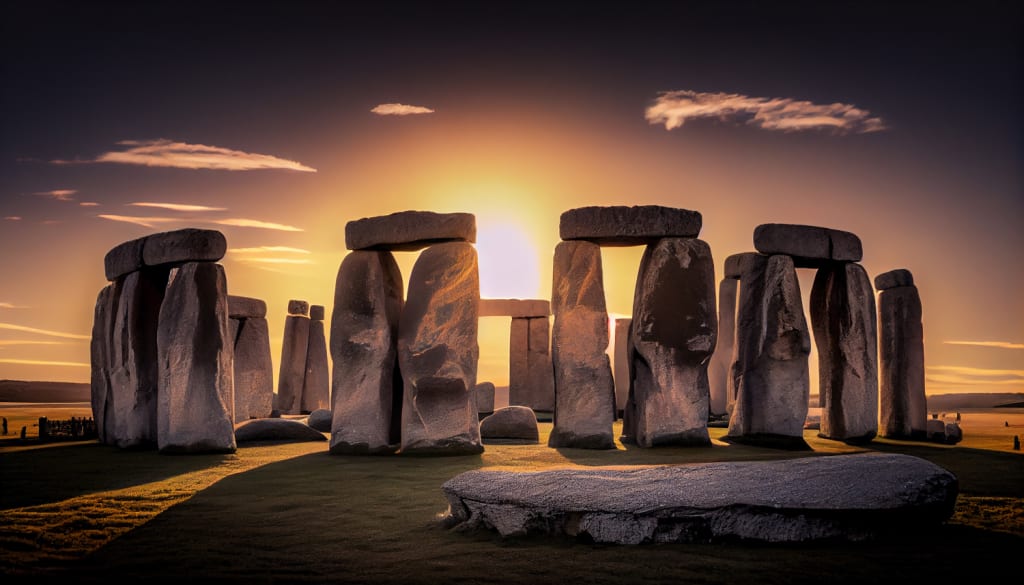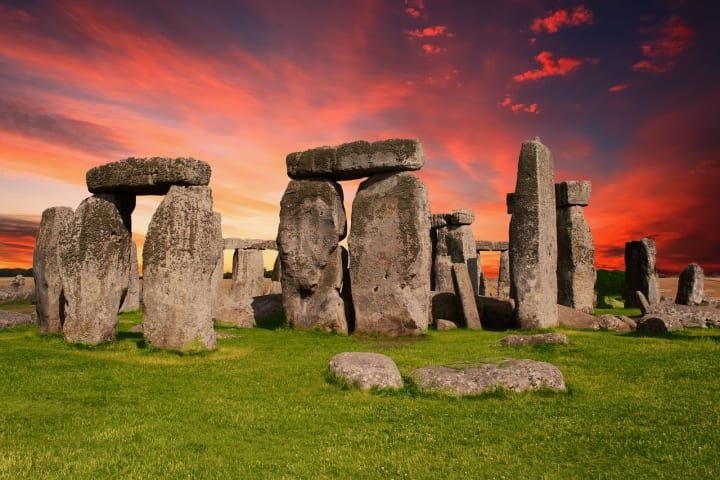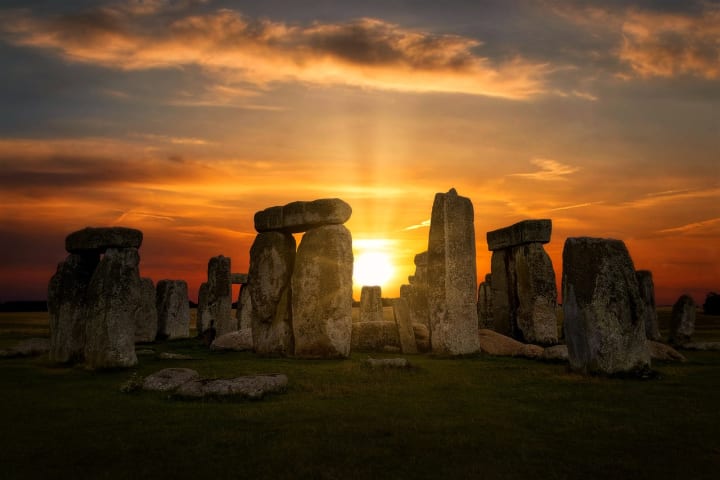Stonehenge: The Ancient Icon
Unraveling the Mysteries

Standing majestically on the windswept Salisbury Plain in Wiltshire, England, Stonehenge is a symbol of ancient ingenuity and enduring mystery. Its massive stones, arranged in a circular formation, have captivated the imagination of visitors for centuries, inviting speculation about its purpose and significance. Let's embark on a journey through the history, legends, and significance of this enigmatic monument.
Origins and Construction
Stonehenge's origins trace back over 4,500 years to the Neolithic period, with construction beginning around 3100 BC. Over the centuries, the monument evolved, culminating in the iconic stone circle completed around 2500 BC. The construction of Stonehenge was a monumental feat, involving the transportation of massive stones from distant quarries.
Stone Types:
- Sarsens: These are the larger stones that form the outer circle and inner horseshoe at Stonehenge. Some of the sarsens weigh up to 25 tons and were sourced from Marlborough Downs, roughly 20 miles (32 km) away.
- Bluestones: The smaller bluestones, which exhibit a bluish hue when wet or freshly cut, are believed to have been transported from the Preseli Hills in Wales, an astonishing distance of about 150 miles (240 km).
Construction Methods:
The methods used to transport and erect these massive stones remain a subject of fascination. Some theories suggest the use of sledges, rollers, and manpower, while others propose the use of wooden sledges on tracks lubricated with water and grease. Regardless of the exact methods, the construction of Stonehenge stands as a testament to the engineering prowess of its ancient builders.

Purpose and Theories
The purpose of Stonehenge continues to elude definitive explanation, leading to a plethora of theories and speculation. Here are some of the most prominent:
- Astronomical Observatory: One theory posits that Stonehenge served as an astronomical observatory, aligned with celestial events such as solstices and equinoxes. The alignment of certain stones with the summer and winter solstices suggests a possible connection to tracking the movements of the sun.
- Religious and Ceremonial Site: Another widely accepted theory suggests Stonehenge was a sacred site for religious or ceremonial purposes. The monument's alignment with celestial events may have been integral to rituals, ceremonies, and gatherings of ancient societies.
- Healing and Spiritual Center: For some, Stonehenge holds spiritual significance and healing properties. Modern-day pagans and druids often gather at the site during significant astronomical events, connecting with ancient traditions and the natural world.
- Legends and Folklore: Stonehenge's mystique has also given rise to legends and folklore that add to its allure. According to one legend, Merlin the wizard brought the stones from Ireland and magically set them in place. Another tale suggests that Stonehenge was constructed by giants who danced in a circle until they turned to stone.
Cultural and Historical Importance
Stonehenge's significance extends far beyond its physical presence. It has been designated a UNESCO World Heritage Site since 1986, recognizing its universal value to humanity. Here's why Stonehenge holds such cultural and historical importance:
- Symbol of Human Ingenuity: Stonehenge stands as a symbol of human achievement and ingenuity, showcasing the capabilities of ancient civilizations. Its construction required sophisticated planning, organization, and engineering prowess.
- Cultural Icon: Stonehenge has become an enduring cultural icon, representing Britain's ancient past. Its image is synonymous with the country, featured on countless postcards, stamps, and travel brochures.

Tourist Attraction and Visitor Experience:
Today, Stonehenge welcomes visitors from around the world, offering a chance to walk in the footsteps of ancient peoples. The visitor experience includes a state-of-the-art visitor center with exhibits that delve into Stonehenge's history, construction, and significance.
Preserving Stonehenge for future generations is a priority, given its age and vulnerability to natural elements and human impact. Efforts are ongoing to ensure the monument's stability and protect its surrounding landscape.
Planning Your Visit
If you're planning a visit to Stonehenge, here are some tips to make the most of your experience:
- Tickets: It's advisable to book tickets in advance, especially during peak tourist seasons.
- Guided Tours: Consider joining a guided tour led by experts who can provide insights into Stonehenge's history and significance.
- Weather: Salisbury’s weather can be windy and exposed, so dress appropriately with layers and sturdy footwear.
Conclusion
Stonehenge stands as a timeless enigma, inviting us to ponder its mysteries and marvel at its ancient origins. Whether you're drawn by its astronomical alignments, its spiritual significance, or its cultural symbolism, a visit to Stonehenge is a journey through millennia of human history. As you stand amidst the towering stones, surrounded by the whispers of ancient legends, take a moment to appreciate the enduring legacy of this remarkable monument. Stonehenge is not merely a collection of stones; it is a gateway to the past, a symbol of human curiosity and ambition, and a testament to the enduring mysteries of our world.
About the Creator
Santosh Sahu
A web developer living in Bangalore, Karnataka, India. A fan of technology, web development, and education. Also interested in entrepreneurship and programming.






Comments
There are no comments for this story
Be the first to respond and start the conversation.